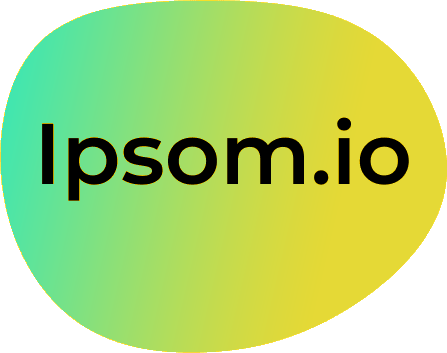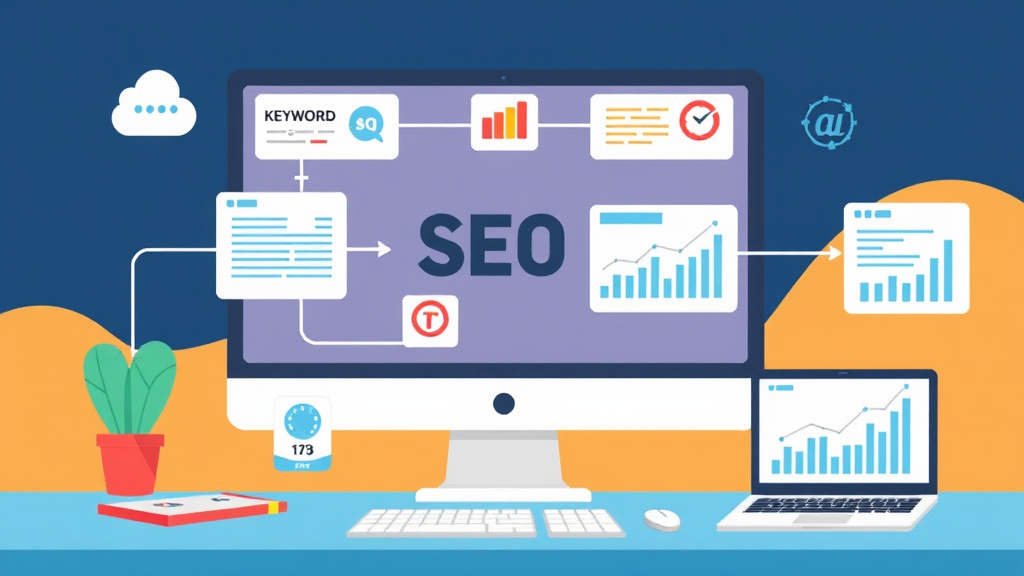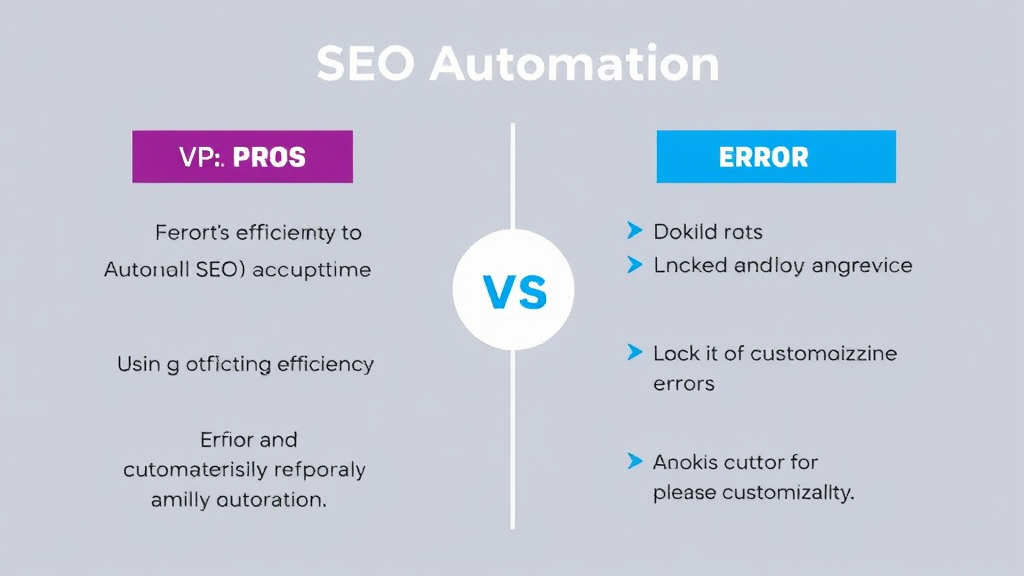Search Engine Optimization (SEO) automation involves using software tools to perform routine SEO tasks without manual intervention. This approach aims to increase efficiency, reduce time spent on repetitive tasks, and allow SEO professionals to focus on more strategic activities. By automating various aspects of SEO, businesses can enhance their online presence, improve search engine rankings, and stay competitive in the digital landscape.
Key Findings
-
Efficiency and Time-Saving: Automating routine SEO tasks frees up time for strategic planning and content creation. (yoast.com)
-
Scalability: SEO automation enables handling optimization for large websites with thousands of pages more effectively. (beki.io)
-
Accuracy and Consistency: Automation reduces human error and ensures consistent application of SEO strategies across a website. (beki.io)
-
Data Analysis: Automated tools provide comprehensive insights through data collection and analysis, aiding in informed decision-making. (beki.io)
-
Potential Limitations: Overreliance on automation can lead to over-optimization, penalties, and may lack the creativity and nuance that human expertise brings. (walkwithpic.com)
What is SEO Automation and Why is it Important?
SEO automation involves utilizing software tools to perform various search engine optimization tasks without manual intervention. These tasks encompass keyword research, on-page optimization, link building, technical audits, and performance monitoring. By automating these processes, businesses can enhance efficiency, accuracy, and scalability in their SEO efforts.
Key benefits of SEO automation include:
-
Increased efficiency: Automating repetitive tasks saves time and allows SEO professionals to focus on strategic planning and creative initiatives.
-
Improved accuracy: Automation reduces the likelihood of human error, ensuring consistent and precise execution of SEO strategies.
-
Scalability: Automation enables the management of SEO for large websites with numerous pages, facilitating growth without a proportional increase in workload.
-
Data-driven insights: Automated tools collect and analyze data, providing valuable insights to optimize SEO strategies and improve search engine performance.
By integrating SEO automation into their digital marketing strategies, businesses can achieve better results with less effort, maintain a competitive edge, and adapt more effectively to changing SEO trends.
External Sources: Learn More
Key SEO Tasks That Can Be Automated
Automating key SEO tasks can significantly enhance efficiency and accuracy, allowing marketers to focus on strategic initiatives. Below are several SEO tasks that can be effectively automated:
Keyword Research
Automation tools can swiftly identify relevant keywords by analyzing search volumes, competition, and relevance. This streamlines the process of targeting high-value traffic opportunities.
Content Optimization
AI-driven tools analyze top-performing content and provide keyword recommendations to optimize blog posts and pages. They can also suggest improvements for readability and SEO, checking keyword usage, headings, and meta tags.
Technical SEO Audits
Automated scans can detect issues such as broken links, crawl errors, and slow-loading pages, ensuring a healthy website infrastructure. Tools like Screaming Frog or Sitebulb can perform these audits automatically.
Backlink Monitoring
Automation tools track new and lost backlinks, identify toxic links, and monitor competitor link profiles, aiding in maintaining a healthy backlink profile.
Rank Tracking
Automated tools monitor keyword rankings across search engines and track performance over time, enabling timely adjustments to SEO strategies.
SEO Reporting
Automated reporting tools generate comprehensive reports on SEO performance, saving time and providing valuable insights for strategy refinement.
By leveraging automation for these tasks, businesses can enhance their SEO efforts, improve accuracy, and allocate more time to strategic planning.
External Sources: Learn More
Transform your business with seamless automation—visit ipsom.io or email us at office@ipsom.io.
Top SEO Automation Tools to Enhance Your Strategy
Implementing SEO automation tools can significantly enhance your digital marketing strategy by streamlining tasks such as keyword research, content optimization, and performance monitoring. Below are some top SEO automation tools to consider:
Surfer SEO
Surfer SEO is a data-driven platform that analyzes your content against top-ranking pages, providing actionable recommendations for optimization. It offers features like the Content Editor for real-time optimization, SERP Analyzer for competitive insights, and a Site Audit tool to identify technical issues. Surfer SEO's AI capabilities assist in generating and refining content to align with current search intents.
SE Ranking
SE Ranking is an all-in-one SEO platform suitable for individuals, agencies, and enterprises. It combines tools for rank tracking, competitor analysis, backlink monitoring, and content optimization. Key features include a Rank Tracker for daily keyword monitoring, Website Audit for identifying technical issues, and a Content Marketing Toolkit with AI-driven content creation tools.
Ahrefs
Ahrefs offers a comprehensive suite of tools for site audits, keyword research, backlink analysis, and rank tracking. Its Site Explorer allows for in-depth analysis of organic search traffic and competitor data, while the Keywords Explorer helps discover keyword opportunities with metrics like search volume and difficulty. Ahrefs also provides AI tools like the AI Content Helper and AI Content Grader to streamline content creation and optimization.
Screaming Frog SEO Spider
Screaming Frog's SEO Spider is a desktop-based tool that crawls websites to audit technical SEO aspects such as broken links, duplicate content, and page titles. It generates automated reports containing essential SEO metrics, helping pinpoint issues and track improvements over time. The tool also integrates with Google Sheets for efficient data export and reporting.
SEOmatic
SEOmatic is designed for large-scale automated SEO page creation, enabling marketers to generate bulk content efficiently. It supports the creation of various page types, including landing pages and blog posts, and integrates with multiple CMS platforms. SEOmatic's flexible templates and automation capabilities make it suitable for digital agencies managing multiple projects.
Selecting the appropriate SEO automation tool depends on your specific needs, such as content optimization, technical audits, or large-scale content creation. Integrating these tools into your strategy can lead to more efficient processes and improved search engine performance.
External Sources: Learn More
Benefits of Implementing SEO Automation in Your Business
Implementing SEO automation in your business offers several advantages that can significantly enhance your digital marketing efforts.
Increased Efficiency: Automating repetitive tasks such as keyword research, on-page optimization, and technical audits allows your team to focus on strategic planning and creative initiatives. This shift not only saves time but also boosts overall productivity.
Improved Accuracy and Consistency: Automation tools ensure that SEO tasks are executed uniformly, reducing the likelihood of human error. Consistent application of SEO best practices across your website enhances performance and reliability.
Cost-Effectiveness: By reducing the need for manual labor, SEO automation can lead to significant cost savings. Businesses can allocate resources more effectively, investing in areas that require human creativity and strategic thinking.
Real-Time Performance Tracking: Automated tools provide immediate insights into your website's performance, enabling swift adjustments to your SEO strategies. Monitoring key performance indicators in real-time helps in promptly identifying areas that require optimization.
Scalability: As your business grows, SEO automation allows you to manage increasing demands without compromising quality. Automated tools can efficiently handle larger websites and more complex SEO tasks, ensuring sustained performance.
By integrating SEO automation into your business, you can achieve a more efficient, accurate, and scalable approach to search engine optimization, ultimately leading to improved online visibility and business growth.
External Sources: Learn More
Potential Drawbacks and Limitations of SEO Automation
While SEO automation offers efficiency and scalability, it's essential to recognize its potential drawbacks and limitations to ensure a balanced and effective SEO strategy.
Lack of Customization: Automated tools often operate on predefined algorithms, limiting their ability to tailor strategies to unique business needs. This can result in missed optimization opportunities that a personalized approach might capture.
Over-Reliance on Automation: Dependence on automated tools can lead to reduced human oversight, making it challenging to adapt to dynamic market changes or search engine algorithm updates. SEO is continuously evolving, and a rigid, automated approach might not adjust quickly enough, potentially impacting rankings and visibility.
Quality versus Quantity: Automation tools often focus on quantitative metrics, such as increasing website traffic or generating a high volume of backlinks. However, this emphasis can sometimes compromise quality. For instance, an increase in backlinks due to automation might not equate to high-quality or relevant links, potentially leading to penalties from search engines.
Initial Cost and Learning Curve: Investing in SEO automation tools can involve significant initial costs, both financially and time-wise. Businesses may need to allocate resources for purchasing the tools and training staff to use them effectively. Additionally, the learning curve associated with understanding and implementing these tools can be steep, particularly for teams with limited technical expertise.
Risk of Errors and Over-Optimization: Automated processes may inadvertently lead to errors or over-optimization. For example, if keyword stuffing occurs due to an automated content strategy, websites might suffer penalties from search engines. Such errors can negatively impact a site's SEO performance, underscoring the need for careful monitoring even when using automation tools.
In conclusion, while SEO automation tools offer numerous advantages, being aware of their potential drawbacks is crucial. By understanding these limitations, businesses can better strategize their use to complement human insight and expertise, fostering more effective and adaptive SEO strategies.
External Sources: Learn More
Best Practices for Integrating SEO Automation into Your Workflow
Integrating SEO automation into your workflow can significantly enhance efficiency and effectiveness. To achieve optimal results, consider the following best practices:
1. Identify Repetitive and Time-Consuming Tasks
Begin by auditing your current SEO processes to pinpoint tasks that are repetitive and consume substantial time. Common candidates for automation include:
-
Keyword Research: Utilize tools like SEMrush or Ahrefs to automate the identification of relevant keywords.
-
Content Optimization: Employ platforms such as Yoast SEO to streamline on-page optimization efforts.
-
Backlink Monitoring: Use tools like Ahrefs to track and analyze your backlink profile efficiently.
By automating these tasks, you can allocate more time to strategic planning and creative initiatives.
2. Select Appropriate Automation Tools
Choose tools that align with your SEO objectives and integrate seamlessly with your existing systems. Key considerations include:
-
Feature Set: Ensure the tool offers functionalities that meet your specific needs, such as keyword analysis, competitor research, and reporting capabilities.
-
Integration: Verify compatibility with your current content management system (CMS) and other digital marketing platforms.
-
User-Friendliness: Opt for tools with intuitive interfaces to facilitate adoption by your team.
For instance, integrating SEO plugins like Yoast SEO into your CMS can automate on-page SEO tasks effectively.
3. Develop Standard Operating Procedures (SOPs)
Establish clear SOPs for each automated task to ensure consistency and quality. Document procedures detailing:
-
Task Parameters: Define the scope and objectives of each task.
-
Expected Outcomes: Outline the desired results and performance indicators.
-
Exception Handling: Specify steps to address potential issues or anomalies.
Having well-documented SOPs facilitates smoother integration and operation of automation tools.
4. Train Your Team
Provide comprehensive training to ensure your team can effectively utilize automation tools. Focus on:
-
Tool Functionality: Educate team members on the features and capabilities of the selected tools.
-
Best Practices: Share guidelines on how to integrate automation into daily workflows.
-
Troubleshooting: Equip the team with skills to identify and resolve common issues.
Regular training sessions help maintain proficiency and adapt to updates in tools and SEO practices.
5. Monitor Performance and Optimize
Continuously monitor the performance of automated processes to ensure they deliver the desired outcomes. Key actions include:
-
Set Clear Objectives: Define specific goals for each automated task.
-
Regular Reviews: Schedule periodic evaluations to assess effectiveness.
-
Adjust Strategies: Make data-driven adjustments to optimize performance.
Utilizing analytics tools can provide insights into the impact of automation on your SEO efforts.
6. Balance Automation with Human Oversight
While automation enhances efficiency, human oversight remains crucial. Ensure that:
-
Quality Control: Regularly review automated outputs to maintain content quality and relevance.
-
Strategic Input: Incorporate human insights for nuanced decision-making and creative strategies.
Balancing automation with human expertise ensures a comprehensive and effective SEO approach.
7. Stay Updated with SEO Trends and Algorithm Changes
SEO is a dynamic field; staying informed about the latest trends and algorithm updates is essential. To keep your automation strategies effective:
-
Continuous Learning: Engage with reputable SEO resources and communities.
-
Tool Updates: Regularly update your automation tools to incorporate new features and improvements.
-
Adaptation: Be prepared to adjust your strategies in response to changes in search engine algorithms.
Staying current ensures that your automated processes remain aligned with best practices and search engine guidelines.
By following these best practices, you can effectively integrate SEO automation into your workflow, enhancing both efficiency and effectiveness in achieving your SEO goals.
External Sources: Learn More
Transform your operations today—visit ipsom.io or connect with us at office@ipsom.io.
FAQ – Frequently Asked Questions
What is SEO automation and how does it work?
SEO automation involves using software tools to streamline and automate various search engine optimization tasks, enhancing efficiency and accuracy. These tasks include keyword research, on-page optimization, content creation, link building, performance monitoring, and reporting. By automating repetitive processes, businesses can save time, reduce human error, and focus on strategic aspects of their SEO campaigns.
Which SEO tasks are most suitable for automation?
Several SEO tasks are well-suited for automation, enhancing efficiency and accuracy:
-
Keyword Research: Tools can analyze search trends and suggest relevant keywords.
-
On-Page SEO Audits: Automated systems can assess meta tags, headings, and content structure for optimization opportunities.
-
Backlink Analysis: Software can monitor backlink profiles, identifying new or lost links.
-
Rank Tracking: Automated tools can track keyword rankings over time, providing insights into performance.
-
Technical SEO Checks: Systems can detect issues like broken links, duplicate content, and crawl errors.
-
Content Optimization: Tools can suggest improvements based on SEO best practices.
While automation streamlines these tasks, human oversight remains essential to interpret data and implement strategic decisions effectively.
Can SEO automation replace the need for human SEO experts?
While SEO automation tools can efficiently handle tasks like keyword research, content optimization, and data analysis, they cannot fully replace human SEO experts. Human professionals bring essential strategic thinking, creativity, and contextual understanding that machines lack. For instance, AI may struggle with nuanced decision-making and adapting to rapidly changing SEO trends, areas where human insight is crucial. Therefore, a balanced approach that leverages both automation tools and human expertise is recommended for effective SEO strategies.
What are the best tools available for SEO automation?
Several SEO automation tools can streamline your optimization efforts:
-
Surfer SEO: Offers data-driven content optimization, including keyword research, content editing, and auditing.
-
SE Ranking: Provides keyword tracking, competitor analysis, backlink monitoring, and website audits.
-
SEMrush: An all-in-one platform for keyword research, site audits, backlink analysis, and competitive insights.
-
Ahrefs: Specializes in backlink analysis, keyword research, and competitor analysis.
-
Sistrix: Focuses on keyword research, rank tracking, and backlink analysis.
-
Lumar (formerly DeepCrawl): Automates technical SEO audits, identifying issues like broken links and duplicate content.
-
Screaming Frog SEO Spider: A website crawler that audits technical SEO aspects such as broken links and duplicate content.
-
Jasper AI: Utilizes AI for content creation, generating SEO-optimized content efficiently.
-
Hunter.io: Assists in email outreach by finding and verifying email addresses, supporting link-building efforts.
-
SEOmatic: Facilitates large-scale automated SEO page creation, including landing pages and blog posts.
These tools can significantly enhance your SEO strategy by automating various tasks, improving efficiency, and providing valuable insights.
How can I avoid over-optimization when using SEO automation tools?
To prevent over-optimization when using SEO automation tools, consider the following strategies:
-
Prioritize Quality Content: Focus on creating valuable, informative, and original content that addresses your audience's needs. This approach naturally incorporates relevant keywords without resorting to keyword stuffing.
-
Use Keywords Naturally: Integrate keywords seamlessly into your content. Avoid excessive repetition or forced placement, as this can disrupt readability and may lead to penalties.
-
Diversify Anchor Text: When building internal and external links, use varied and contextually relevant anchor texts. Overusing exact-match keywords in anchor texts can appear manipulative to search engines.
-
Monitor SEO Performance: Regularly review your website's performance metrics, such as traffic, bounce rates, and keyword rankings. This helps identify potential over-optimization issues and allows for timely adjustments.
-
Stay Informed on SEO Best Practices: SEO guidelines and algorithms evolve. Continuously educate yourself and your team on current best practices to ensure your strategies remain effective and compliant.
By implementing these practices, you can effectively utilize SEO automation tools without risking over-optimization.






